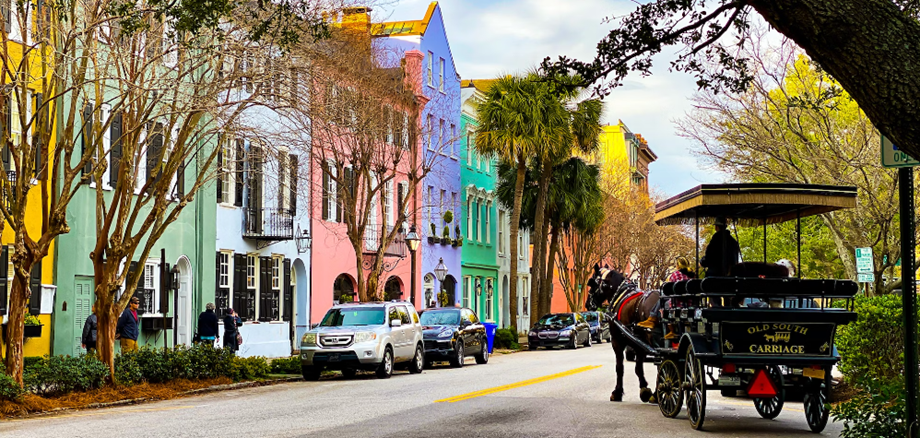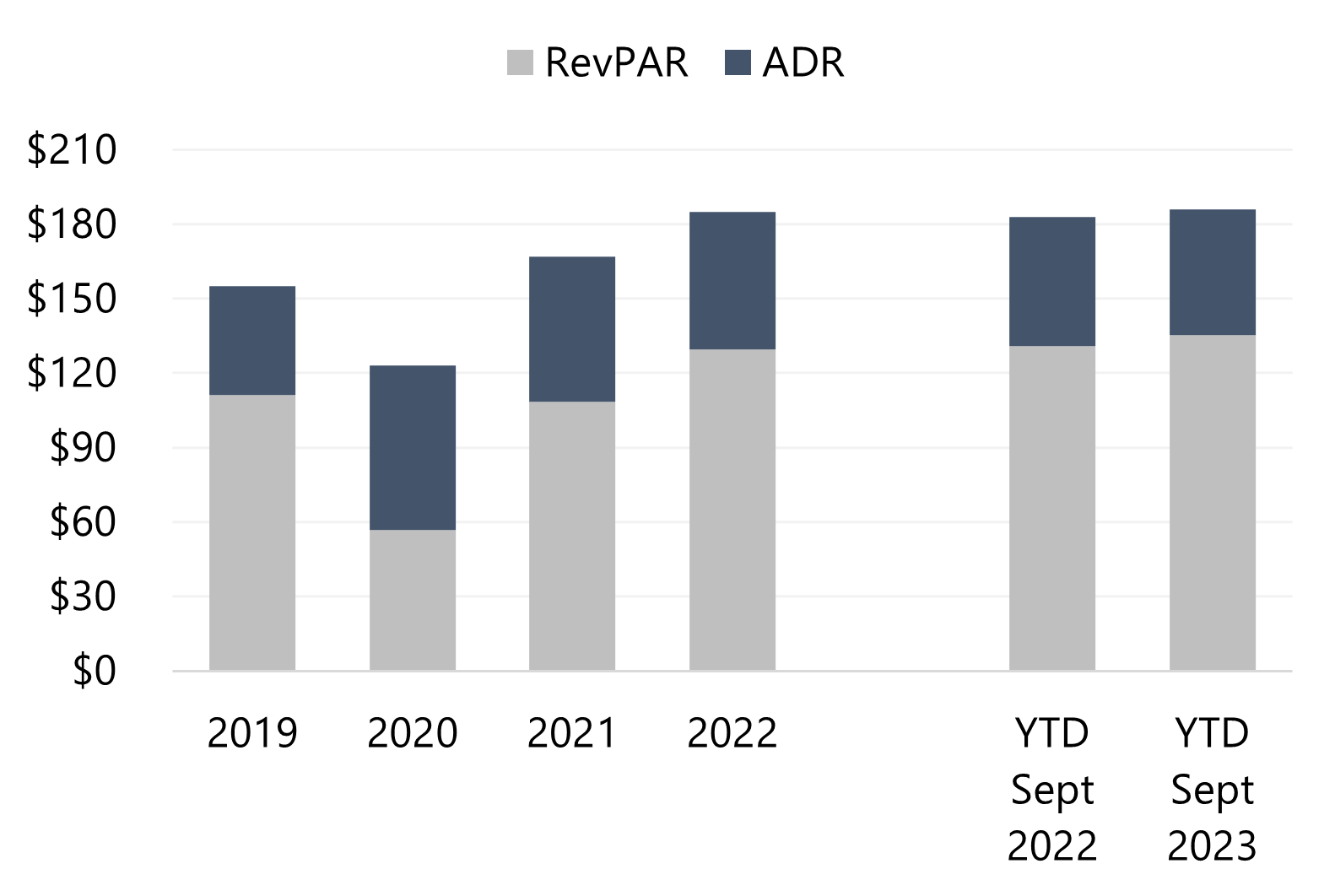Demand Peaks & Historic Milestones
The global renown of Charleston as a tourist destination continued in 2023 with its rank as the #1 city in the United States for the eleventh year in a row, according to Travel + Leisure readers. In 2023, Charleston gained a spot among Travel + Leisure’s list of the top 20 destinations in the world. Moreover, in the past five years, several Charleston Historic District hotels have been recognized on the World’s Best lists, including Wentworth Mansion, The Loutrel, The Spectator Hotel, and Planters Inn.
With reputation comes demand. According to the College of Charleston’s Office of Tourism Analysis, the total number of room nights sold in the greater Charleston area in 2022 was 4.8 million, which represents a 7.5% increase over the prior year and a 3.9% increase over 2019, the last peak year. According to data collected by STR, in the year-to-date 2023 period through September, the number of room nights sold in Charleston County was nearly 2% above the same period of 2022. The outlook remains positive amid these soaring city-visitation metrics. Meanwhile, passenger traffic at the Charleston International Airport surpassed five million for the first time ever in 2022, and the year-to-date September 2023 passenger traffic is approximately 16% above the passenger traffic in the comparable 2022 period.[2] Decidedly, 2022 was the best year for tourism and travel in the market’s history, as illustrated on the chart below, and 2023 is poised to be a banner year as well.

Some recent expansions in Charleston are making history, while others are celebrating it. The Charleston Harbor achieved a milestone in December 2022 by becoming the deepest harbor on the East Coast following a years-long dredging project. Additionally, the new International African American Museum opened in July 2023 on the eastern edge of the Historic Downtown. The museum in particular represents an important convergence of history and tourism.
Supply Pipeline & Historic Preservation
While market demand has increased overall, hotel occupancy in 2022 averaged 70% annually, below the 71.6% occupancy registered in 2019, which is largely attributed to supply growth. However, the increase of 1.6% in year-to-date September 2023 compared to the prior period suggests absorption of the new supply by the end of the year. Meanwhile, market ADR for 2022 was a strong $30 above the 2019 level, and RevPAR has increased by over 16% since 2019.[3] The upward trajectory continued through the year-to-date 2023 period. While the outlook is optimistic, future growth may be curtailed by the normalization of the robust ADR growth realized since the pandemic, as well as significant new supply in the pipeline.
There are approximately 19,000 available rooms in the greater Charleston market, one-quarter of which are located on the Charleston Peninsula.[4] Significant hotel openings on the Peninsula in 2022 and thus far in 2023 include The Pinch and MOXY Charleston Downtown, while recent conversions include The Mills House, a Curio Collection by Hilton (former Wyndham Grand Hotel); The Palmetto Hotel (former Saint Hotel Charleston); and The Limited Hotel (former Holiday Inn). With the 200+-room Cooper Hotel under construction, the proposed Four Seasons Hotel redevelopment, and numerous other hotel projects in the early stages of development, Charleston is on the road to new milestones.
The rewards of growth should also be considered in light of the potential risks. While Charleston County has over 200 sites listed on the National Register of Historic Places, Charleston made its way onto another list in 2023: the National Trust for Historic Preservation’s annual 11 Most Endangered Places. According to an interview we conducted with Sam Spence, a representative of the Preservation Society of Charleston, “New development, especially hotels, must be sensitive to our irreplaceable historic city and mitigate impacts on affordability, public space, and infrastructure.” He went on to remark on the necessity of protecting the integrity of the city’s character and culture, as well as its infrastructure and livability, saying, “Proposals for bigger, taller, and more expensive hotels […] It’s not sustainable.”
Several development restrictions are currently in place in Charleston County’s accommodations overlay districts (A Overlay Zone), aiming to soften hotel growth and manage the balance between commercial and residential building types, income, and infrastructure. Currently, the ordinance governing the A Overlay Zone stipulates guestroom caps based on the area’s designation, ranging from 50 rooms (A-1) to 175 (A-7), with the exception of full-service hotels that may be developed with up to 250 guestrooms. However, no more than eight full-service hotels are allowed on the Peninsula.[5]
Charleston’s reputation as a premier tourist destination with a rich history and Southern charm should continue to support a steady base of demand and strong hotel performance. Demand and relatively high barriers to entry are positive pressures on value. By working within Charleston’s planning and zoning regulations, hotel developers and investors are doing their part to maintain the city’s spirit, which is one of both history and modern growth.
[1]Explore Charleston, Historic Overview, Retrieved 11/14/23.
[2] Charleston International Airport Statistics. Retrieved 11/14/23.
[3] Office of Tourism Analysis, School of Business, College of Charleston, Estimation of Tourism’s Economic Impacts in the Greater Charleston Area, 2022.
[4] The remainder are located within the West Ashley, North Charleston, East of Cooper, and Beach Communities submarkets.
[5] Charleston, SC Zoning Code, Sec. 54-220. Retrieved 11/14/23.